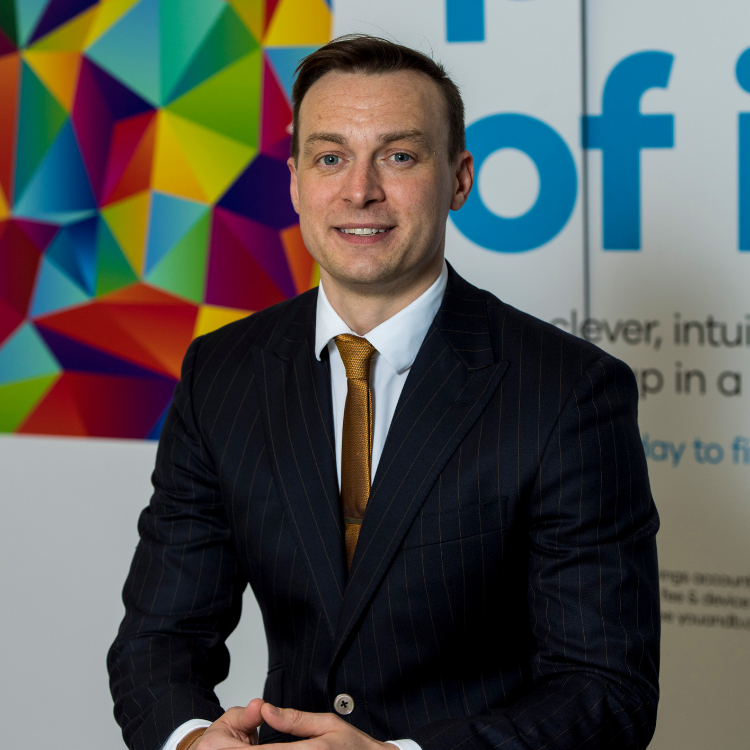Spotlight on: Vibrant LGBTQ+ network group

Andrew L. Crumpton, co-chair of Vibrant
How did Vibrant start?
‘Eight years ago, a few colleagues and I set up Vibrant – CYBG’s LGBT employee network group – together. The conversation started because we had all at some point felt alone and isolated as LGBT people in our workplace. If you don’t know that there are people like you in your workplace, it’s hard to believe that you belong there.
'At first, we were a very informal group. We were just like-minded people who noticed a clear gap within our structures to allow LGBT employees to be visible and supported, and we came together to discuss how we could change that. We have come a really long way in that time and now have a formal structure. We work with senior management and the Human Resources (HR) team to make our organisation more LGBT inclusive, and the size of our membership is almost 50 times what it originally was (starting from just a handful to almost 200 members). '
What was the process for formalising the network group?
‘Getting in touch with the HR team was our first step, because a lot of our objectives as a network group related to what they do. This was a good way for us to get an idea of how we could work together with the wider organisation, and improve the support that was on offer. The HR team really engaged with us and helped from a strategic point of view, supporting us in developing our objectives and explaining them in a way that was engaging for colleagues who may not be familiar with diversity and inclusion work. This was very helpful with the next step, which was to approach senior management and discuss the objectives and benefit to the business in setting up Vibrant. We went to them with ideas on how we could make our workplace more inclusive of LGBT employees and our plans for how the network group could contribute to these improvements. Starting this discussion was what allowed us to be formally recognised by the organisation.
The HR team also helped us get a member of senior management to be our executive sponsor who sits on our executive committee meeting and is our first point of contact when the network group needs to discuss anything with senior management. Our current executive sponsor is a fantastic ally, and this way of working has been incredibly helpful and successful for us.’
What challenges did you face and how did you overcome them?
‘At first, convincing the rest of the organisation of the importance of an LGBT employee network group, and having the appropriate resources, was a bit of a challenge. People were asking us ‘How much will this cost?’, and ‘Will this take time away from members’ day jobs?’.
'We had to be honest about what we needed. It was particularly important for us to be able to carry out network group activities during working hours, and we knew that funding for some events and activities would allow us to achieve our goals. We sent senior management a structured response, detailing the kind of the support we needed, as well as what it would bring to the organisation. This helped them understand that having a network group would not only provide essential support for LGBT employees, it would bring a lot to the wider organisation.
'Explaining why it’s worth the time and money and articulating the network group’s purpose in a language that made sense to our internal audiences was a very important step.
'Of course, resources are limited, and at times we’ve had to compromise. For example, Vibrant doesn’t have a set yearly budget, but we’re still able to apply for funding for specific events we want to organise or attend. We like to see this as a personal development opportunity for our members. Building a case for funding for an initiative is a good way to develop project planning and costing skills, as well as learning how to track outcomes.
'We’ve also had to be resourceful and come up with initiatives that wouldn’t require a considerable budget, especially at the start. Lunch and learns are one of our go-to activities to engage the wider organization and raise awareness of various topics related to LGBT inclusion at no financial cost. Our members volunteer and prepare an educational presentation, and colleagues come to have lunch together while listening and learning. We also use the organisation’s conference call system so that colleagues working remotely can join.’
How did you grow as a network?
‘Having the support of allies – or friends of the network as we call them – within the organisation was crucial. Colleagues who aren’t LGBT but care about inclusion helped us spread the word about the network group. They also supported us with our events when they had relevant skills. Having friends and this support was essential, especially during the early days when we were trying to kickstart the network group. For network groups like ours, there’s definitely strength in numbers, and to this day, even with a bigger, more developed network group, the support and contribution of allies remains invaluable.’
What was your impact on other network groups internally?
‘Vibrant was one of the first two network groups to be set up at CYGB. We knew there was a severe need for it, but we didn’t have much experience or knowledge when it comes to running a network group. We had to go through some trial and error and take some risks before we figured out what works and what doesn’t. Since we first started, several new network groups have been set up at CYGB for other diversity strands. Vibrant’s work helped pave the way for them, and we all learn from each other so all of CYGB’s network groups can achieve their goals.’

